I had a few ideas on how an anime is produced, though these were from documentaries of western animation, and my own experience as a production assistant for broadcast and film as well as project management of various kinds. Nonetheless I approached my introduction to anime productions with eyes as fresh as I could make them, when TOEI showed us a video of their process as well as their public relations guy Jay Hernandez (who’s an animator himself) giving us the lowdown during our tour. I won’t be able to show you their actual ‘how-to’ video, but I can use images from Otaku no Video!
Planning is the first step, where the ideas are presented to the planning team and discussed. This stage involves the identification of the target market, and the overall marketing strategy.
I imagine that merchandising activities are also identified at this stage. The usual manufacturers and distributors are put on the short list, as well as the intended networks and potential advertising partners.
Concept Design (after which I suspect the project is shopped to networks and advertisers)
Character Design (the designer effectively ‘stalks’ people in their natural environment)
In the Background Design stage the designer effectively ‘stalks’ environments either as models or actual subjects for the background art in the animation. We’ve seen a number of settings that are very consistent with real environments, even when science fiction elements are applied, like the Ghost in the Shell movie’s Hong Kong.
Hand-drawn images are digitized and drawn over. Here is some re-used but relevant footage to our discussion: How I drew tried to draw the above piece of wood for One Piece:
The Digital drawings are created using the RETAS PRO SUITE of animation software, gone are the days of hand-drawn cels, like how the folks at GX used to do it in Otaku no Video.
Key Animator: Keys (aka Key Poses, Key Drawings or Extremes): The keys are the extreme drawings or images of an action, produced by the animator to create the structure of the animation. One can imagine them as a starting pose of a character, and the finishing pose of the same.

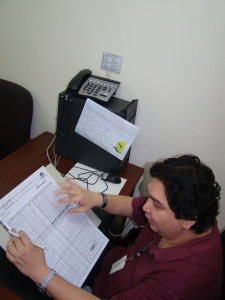

The In-between Animator is the one who draws the images that ‘fills the gaps’ between the Keys. In the images above, Jay Hernandez makes in-between drawings for the Key frames in One Piece and Fresh PreCure respectively.
Once the drawings are complete, the Color Stylist does her work, though it’s all digital now compared to the GX work on Misty May in the image above. While animation production remains an expensive venture, I imagine it to be less so – which should explain the massive number of shows that have been produced over the last decade.
The SFX Artist adds whatever special effects are used: sparkles, flashes, vibrations, sparkling bacteria… the works.
These are all put together by the Editing Staff, which under the guidance of the director, prepares the animation for the sound, voices, and music to be added.
Not really news to me, but after hearing the explanation at TOEI and watching recording sessions (site linked to may have NSFW images in its sidebar though post linked is SFW), it makes more sense to me how the scene must be produced first before the actors record their lines. The Seiyuu (Voice Actors) dub their lines next.
To match the visual SFX, Sound Effects are then mixed into the footage.
The BGM (Background Music) is selected (if already composed). Here’s a link to the translated interview from Newtype magazine of Kanno Yoko and Kawamori Shoji about their work process in creating the music for Macross Frontier. An excerpt:
Kawamori: The way ~F was made was really like a musical. I’ve heard that in musicals, the composer is involved in the storyline. Ms. Kanno’s role was just that.
Kanno: No matter what project I am involved in, I believe it is always my job to show through music what the images cannot express. But almost always, once I hand over the score to the director, my job is over. It’s a one-way flow of my ideas. But this time around, I would tell them ‘I handled it in this manner and made it like this,’ and a response from Mr. Kawamori would come immediately. This is my first time doing a job that is not a one-way flow. So, to have been involved in this project, I am happier than anyone can imagine.
Then the Final Sound Mixing is done, and the anime is ready for screening!
Here’s a recap:
- Planning
- Concept Design
- Character Design
- Background (drawings) Design
- Key Animation
- In-between Animation
- Color Styling
- SFX Animation
- Editing
- Dubbing (voice)
- Sound Effects Editing
- Music selection
- Final Sound Editing
Thanks to Jay Hernandez, my cousins-in-law Jarlon and Riza Sison, and Soya Satoshi Sachou of TOEI Philippines for their hospitality and one very educational trip.
Some trivia: 70% of TOEI’s drawings are done in the Philippines. 234 drawings are expected per employee every 15 days.
—
Guide to Key and In-between animation [->]

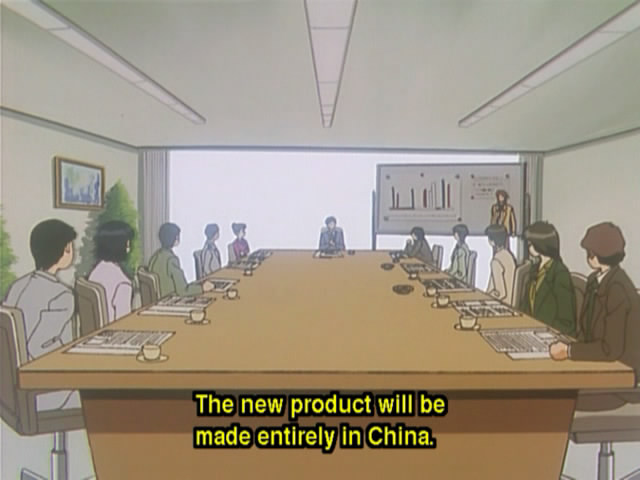

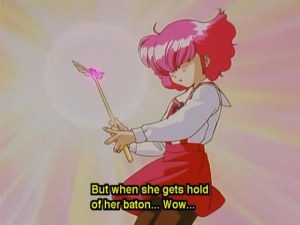






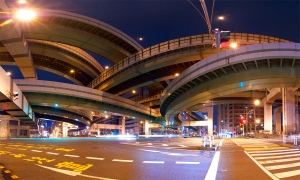
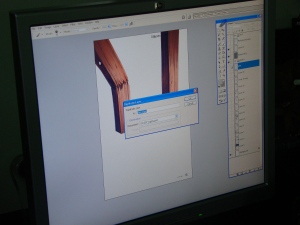


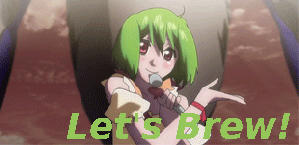




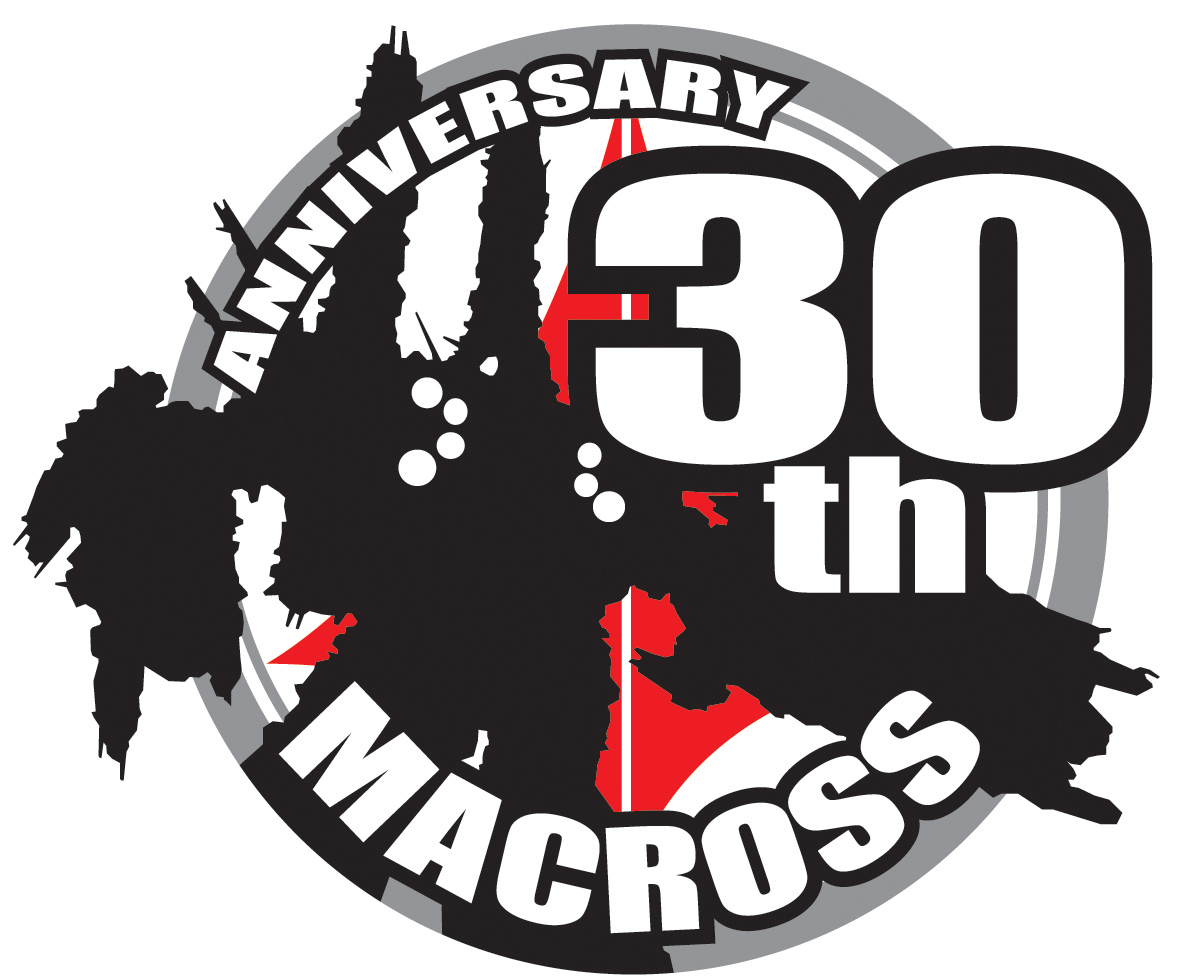


Don’t forget the part where bad anime studios “Add Suckage” to adaptations! =3
Very interesting writeup, I wonder if there is any sweet software that makes in-between animation super easy now.
Your mention of dubbing is interesting because “dubs” are not bad so much as “many non-Japanese voice actors” are bad.
What about the love? When does the love get added?
Thanks, that was informative, and I’ve always been wondering about this. However, I’m still slightly in the dark as to the roles of the director. I guess he tells the key animators, “hey, do it like this!” – and then they do it like that. Yet the storyboardists are the ones that say “well, person X should perform crucial event A, but it’s up to the director as to how exactly the event is performed.”
Awesome, informative post! As Konata would say, “Good job!”
Of course, now I’m reminded on how I must hang my head in shame as a Gainax fanboy who hasn’t seen Otaku no Video. I need to get on that.
@ Kabitzin
Retas Pro is supposedly very easy to use. They let me mess with it and it does seem intuitive enough.
Soya Satoshi Sachou told me that if I had any drawing talent at all, going through their training program will get you ready to draw frames in a month’s time. I’m inclined to agree with him.
Dubbing is a technical proccess including recording the lines delivered by the voice actors and matching them with the existing media. It’s a pretty generic term (i.e. I used to dub voice-over work for radio ads and other events), that has little to do with the dubs vs. subs politics among us anime fans.
About adding the ‘suck’, I think that happens in the planning stage where they get blinded by the =Y= $igns to consider important factors that lead to adaptation decay. ^_^
@ Baka-Raptor
I found very little evidence of love during my visit there. Emotion can be present in the performance of the dubbers.
In the Soya Satoshi Sachou interview there is little apparent heart/love present in the work if one measures such in terms of hyperbolic manifestations as I usually make them.
However, given his 17 year career (I am unaware how many years he spent in the industry prior to his coming to the Philippines) there is the kind of love that keeps one with the object, the partner; in this case, the business of making anime.
@ lelangir
What the video didn’t include, but I should have given my experience in media production is the Story Board work:
This should come before the Key Animation stage. The story is broken down into scenes by the writer(s) and the director. The storyboard aritsts (which may be the Key Animation staff anyway) build the scenes as if they were manga.
This is less critical if the anime is a manga adaptation, since the manga provides such story boards already that the Key Animators build the scene from.
Since Key Animation is the set of drawings depicting beginning and ending poses in the scene, the story board is the source of such.
The director oversees this, and I imagine that he is quite involved in this process.
@ Michael
Thanks!
I’m a GAINAX fanboy too who has only seen Otaku no Video less than a month ago. So I can definitely relate to how you’re feeling. All the Macross references there made me even more ashamed!
Two comments: 1) 70% done in Philippines, that’s amazing. Didn’t expect that. 2) cousins-in-law. First time I heard the expression. I love it, though, and I’m going to start using it right now!
Riza is my wife’s cousin, making Riza’s husband her cousin-in-law… I suppose. They become my cousins in law in a certain way whose technicalities I’m not entirely sure about. Nonetheless I like it and am using it. ^_^
70% relates to TOEI’s drawings. Satelight’s Macross Frontier also outsourced some work to the Philippines and Thailand IIRC (not very good work I’m afraid), but a lot (of non-TOEI work) is outsourced to Korea..
THIS IS THE SINGLE GREATEST POST EVER MADE THANK YOU VERY MUCH YOU ARE MY GOD.
I’d figure the love comes in with what the specific role players put in. Otherwise, the music isn’t as pleasing to the ear, the animation isn’t as fluid and beautiful, and so on. At the same time, we have to be ready to feel the love ourselves, Baka-Raptor. 😛
Great post. By the way, have you checked out Animation Runner Kuromi 1 and 2? They are fun anime movies that explain more about the animation process. Great stuff there.
@ digitalboy
Thanks man, glad you like it.
@ TheBigN
Thanks! Also, I should check those movies out! Thanks for referring them. But better yet, why not blog them N?
Very informative! I find it interesting too that there is a single industry-wide piece of software for everything, and that background music comes so late in the game (though the exception of Kanno’s involvement in Macross Frontier is noted here). To me music is extremely important. Good music can often save shows.
I felt this should be exposed to more readers, so I’ve made it one of the Dailysite featured articles for today in the anime/manga channel! Congrats.
Thanks very much Mike! With regards to music, I put in there music selection, should the pieces be already composed. I imagine a parallel run – once the story is complete and drawings are made, the composer also goes to work.
In the stage I mentioned, the music is selected per scene. But yes, Kanno’s interview was an eye-opener for me.
I would like to elaborate on the music part. Usually the composer makes arrangements based on script, concept art, director’s comments, etc. Basically the available material in the early stages of production. It’s not always a “one-way flow” because some times the composer makes a first try so the director can comment on them (it’s easier to comment on existing music than to describe from scratch how a music track should be). Usually the first try is good enough and the music gets used, but some times the composer heads back with the additional comment from the director and remakes the music. These “first try’s” can be bought commercially as Image Albums.
Another point, your description makes it sound like the whole process is a step by step process where one step follows another discreetly in a linear fashion. But in reality it’s not always the case, and a lot of these steps can and will be done simultaneously. For obvious scheduling reasons.
It is not unusual that afreco has to be done with unfinished animation. I myself have been to a afreco where half of the episode was only key-animation. Sound studios have to be rented and there schedule doesn’t always suite the schedule of the animation studio.
I would also recommend the the six hour long making of dvd of Mononoke Hime from the Ghibli collection (sadly, it doesn’t have any subs). Although it’s before they stated using computers (they only used it to render daidara botchi and some other effects) so a few things have changed but most of the process is still the same I’ll guess. It give valuable insight in to the making of anime.
Awesome. Thanks for all that.
The research I did was mainly the effectively simplified introduction video they showed us at TOEI animation, where the music section wasn’t elaborated on at all. In any case what you said is really cool and makes me happy that I put this post out eventually.
Great job explaining the nuts and bolts of production as told by someone with real first-hand experience.
Okay, I have something you should add to the blogroll (and for added reference to your readers) because j1m0ne specializes in studying the work of the seiyuu and explaining the afureko (after-recording) aspect of anime production, and seiyuu news:
http://atemonai.com/blog/
http://atemonai.com/blog/seiyuu-glossary/
By the way, the documentary on Ponyo is about 14 hours long, and +10 to you for putting up Rie Kugiyama (now that I liked her Touko more). 😀
Uh, thanks. That seiyuu glossary is really informative! Good job sharing it with us.
Pingback: The False Farewell: Macross Frontier 06 (Bye Bye Sheryl) « We Remember Love
Pingback: Anime Production – Detailed Guide to How Anime is Made and the Talent Behind it! « Washi's Blog
i just saw this blog by googling “anime production process” and i got questions on the following quotes on this blog entry
>> Hand-drawn images are digitized and drawn over
why cannot just skip the hand drawn images on papers and just do the drawings directly to digital tablet or anything digital way of drawing? i think without papers the japanese anime studios can lessen the production cost (significantly) that way
>> The Digital drawings are created using the RETAS PRO SUITE of animation software, gone are the days of hand-drawn cels, like how the folks at GX used to do it in Otaku no Video.
is that RETAS PRO SUITE the software used by all anime studios?
and im a filipino too and got mix feelings about outsourcing anime production since most of the outsource works of anime is not so good looking, but their are exceptions like TOEI’s outsourcing of their anime to the Philippines as their One Piece and Toriko anime looks fine to me and have consistent drawings
and thanks for this blog its very informative i just like to suggest that you compile your anime making process blogs like this one and the TOEI philippine president interview and the DBZ HD remake and more that i might not yet know, i mean can you put a section for them they are cool and informative to read
more power to you sir!!!
1. I won’t dispute your suggestion, but I think the people who draw by hand are the veteran key animators who’ve been drawing by hand ever since. I’m sure at some point there will be illustrators and animators who can draw straight onto the computer. But I think the current generation of veterans prefer drawing by hand.
2. I’m afraid Jay Hernandez couldn’t verify that when I asked him back then.
3. Outsourced work has many disadvantages, but the more experienced the outsourced animators get, the better they become. Thanks and I’ll look into creating a sub-category for the materials I published derived from my visit to TOEI 2 years ago.
cool looking forward to the sub-category
and one last question how much in peso is the average salary of a animator on TOEI Philippines?
I made a category “Craft” though there are only three posts there. You may find the “Only in the Philippines” sub-category interesting as well.
I’m afraid I don’t know the pay scale for animators, but I figure that it should be on the low end of the BPO/KPO scale, modified by night differential when applicable.
thanks sir
MEN I AM REALLY WANT TO SEE THE OTHER EPISODE OF HIGH SCHOOL OF THE DEAD ANIME PRODUCTION DO THE OTHER EPISODE PLISSSSS \
Pingback: Guzmán Díaz » Touhou doujin anime of pure awesomeness
Pingback: Анимация и 3D графика / Как создается аниме by SOS Admin!
hey great article! I have a question about the dub/animation process. How the key animator draws all the mouth positions or length of the dialog without any voice recording?
thanks for your time
woah … so making anime is not as simple as i think … but that was informative . thanks dude
That part on Editing Staff, what are their job names exactly? What are they operating? I’m interested in doing it and I’d like to know ^^
Pingback: Как создается аниме | Animebased|Аниме основа
Pingback: Step by Step How Anime is Made | Anime no Sekai
How to be a anime creator ?
Pingback: Detalhes sobre a produção de anime | Gekkou Gear
A production looks more like this at any animation studio:
Pre-production:
Planning
Concept Design
Character Design
-Colour design
-Background planning
-Writing scripts
Rewrites
-Choosing a animation director(s)/assistant, other producer(s), line-director (who’s usually the animation director), anyone who is making the show happen.
-Recording music
Recording sound effects
Atmosphere recording
-Shooting reference material/video/film/photos
-Storyboards
Storyboard revisions
-Casting Voice Actors/Actresses
-Animatics/Lyca Reel (Moving version of the storyboards for timing, and if there are voice tracks available they are also added). Animatics will go overseas with the Storyboards, Script(s), and Layouts for production.
-Layout
All done before any animation begins, besides test animation if there is such a thing happening anymore.
_______________________________________________________________________________
Production (usually done in South Korea, North Korea, Hong Kong):
Background (drawings) Design
Key Animation
In-between Animation
-Clean-up animation is done after all the animation is done.
-Color Styling/Colour is done before the Special Effects are added or done.
SFX Animation
-Compositing in After Effects, Retas Studio Pro, or similar compositing apps; taking all the elements
and laying them into final shots for editing.
-Pre-Edit (sometimes done to remove shots being used and to remove “shot cards”)
*Shot Cards are inserted before every shot, they are numbered and sometimes contain Time Code/Notes
Dubbing (voice) is done if a show (picture show, not just tv show) is being simulcast in different languages while airing. Usually they are subtitled in any given language and not dubbed until
a foreign company has licensed the show and will be airing it in their country.
Sound Effects Editing
Music selection, this would be pre-recorded music e.g. Asian Kung-Fu Generation’s opening song(s) for Naruto. The songs are licensed from their record label or whomever holds the copyright.
Music for shows are done way before this stage because most shows animate to the music , time beats, or are performing the song(s) in the show. It’s all about TIME when producing animation.
Final Sound Editing
Finishing Edit, this goes onto a hard drive , Beta SP tape or better (I think that’s what it’s called) and/or 35mm/65mm Film for archive.
Some stations if not all require “closed captioning” for hearing impaired viewers so the tape would be used to edit CC for the show.
Since most things are digital these days, shows are transported on a hard drive, High Def Pro Tape or downloaded through a server for airing.
Most Anime shows these days are sent to Hong Kong, South Korea, sometimes Mainland China for animation for the Japanese productions. Recently studios in India and Jamaica have been opening up to do foreign animation and inbetweens too.
I know this is an old post, I just want everyone who is stumbling upon this article now to know that there are a lot more stages that go into Anime or any animation production that’s traditionally done (2D/2.5D).
Pingback: Anime as dictated by its Producers and Directors • Deremoe
Pingback: What Is Animation Explain Steps Involved In It – epicask.top
Pingback: A Detailed Guide of How Anime Is Made - Konnichiwa